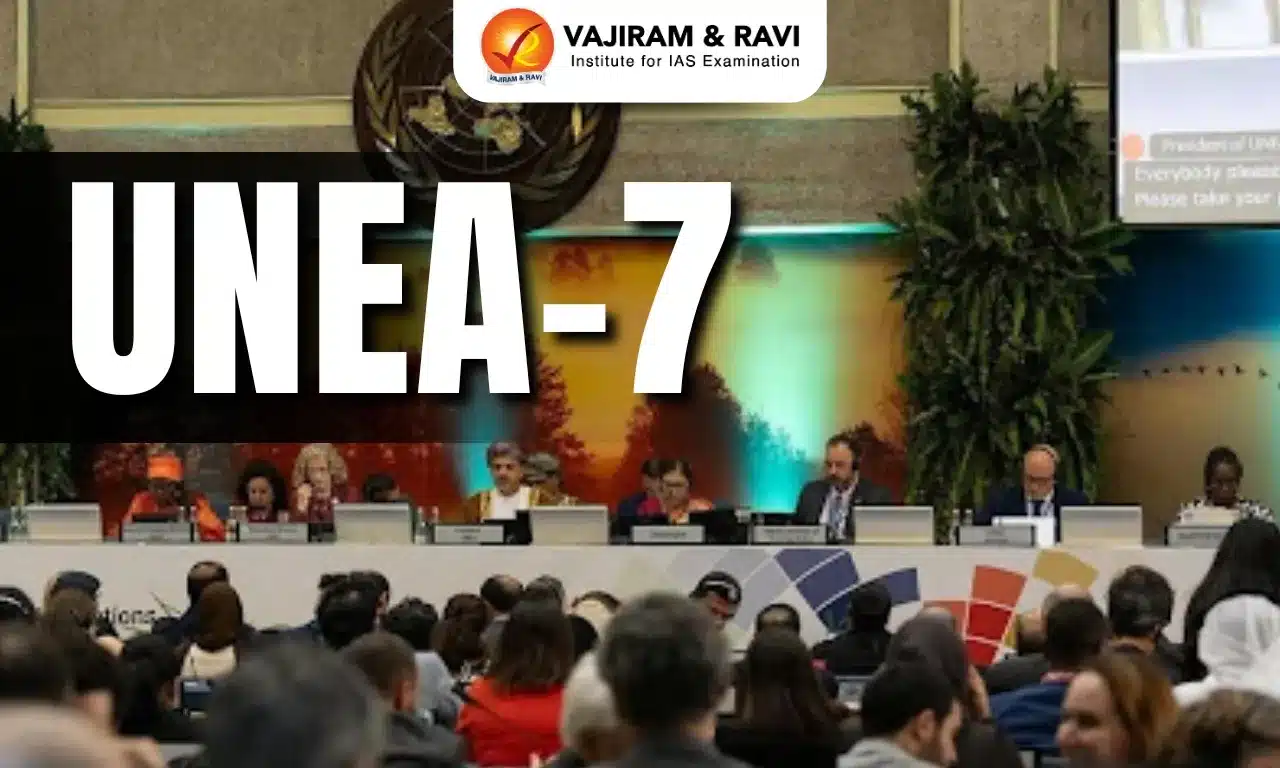What’s in today’s article?
- Why in News?
- What is First Past the Post (FPTP) system?
- What is Proportional Representation (PR)?
- What are international practices?
- Way forward for India
Why in News?
The results of the Lok Sabha elections were declared on June 4. The ruling National Democratic Alliance (NDA) has won 293 seats with a 43.3% vote share while the Opposition bloc INDIA has secured 234 seats with a 41.6% vote share. Other regional parties and independents received about 15% of the votes but only won 16 seats in total.
As a result, many experts are now advocating for India to switch to a proportional representation system.
What is First Past the Post (FPTP) system?
- About
- The FPTP system, also known as the simple majority voting system, is an electoral method where the candidate with the most votes in a constituency wins the election.
- This system is widely used in countries like the United Kingdom, Canada, and India for legislative elections.
- Working
- Single-Member Districts – Each constituency elects one representative.
- Plurality Wins – The candidate who receives the highest number of votes wins, regardless of whether they achieve an absolute majority (more than 50% of the votes).
- Advantages
- Simplicity
- Easy for voters to understand and participate in.
- Straightforward counting process.
- Strong and Stable Governments
- Often produces a clear winner, which can lead to strong and stable governments.
- Under this system, the ruling party/coalition can enjoy a majority in the Lok Sabha/Legislative assembly without obtaining majority of the votes (more than 50%) across constituencies. This increases stability of the govt.
- Direct Representation
- Provides direct representation of constituencies, ensuring that each geographic area has a dedicated representative.
- Accountability
- Representatives are directly accountable to their constituents, as they can be easily voted out in the next election if they do not perform well.
- Simplicity
- Disadvantages of FPTP
- Disproportionality
- Can lead to a significant mismatch between the percentage of votes received and the percentage of seats won.
- Smaller parties may be underrepresented, while larger parties may receive a disproportionate number of seats.
- Disproportionality
- Wasted Votes
- Votes for losing candidates do not contribute to the overall election result, which can discourage voter participation.
- Can lead to strategic voting, where voters choose not their preferred candidate, but the one they think has the best chance of winning.
- Minority Rule
- A candidate can win with a minority of the votes if the opposition is divided among multiple candidates.
- This can result in a government that does not reflect the majority preference of the electorate.
- Geographic Concentration
- Parties with geographically concentrated support can win more seats than parties with evenly distributed support, even if they receive fewer overall votes.
- Encourages Gerrymandering
- The system can incentivize the drawing of constituency boundaries to favor one party over another, known as gerrymandering.
What is Proportional Representation (PR)?
- About
- PR is an electoral system designed to allocate seats in the legislature in proportion to the number of votes each party receives.
- This system contrasts with the First Past the Post (FPTP) system, where the candidate with the most votes in each constituency wins.
- PR aims to create a more accurate reflection of the voters’ preferences across the entire electorate.
- Working
- Party Lists – Voters typically cast their vote for a party rather than an individual candidate.
- The party then allocates seats to candidates from their list based on the proportion of votes received.
- Multi-Member Districts – Each district elects multiple representatives, which allows for proportional allocation.
- Thresholds – Often, a minimum percentage of votes (threshold) is required for a party to gain representation, to prevent excessive fragmentation.
- Types of Proportional Representation:
- List PR – Voters choose a party, and parties receive seats based on their share of the vote. Seats are filled by candidates from the party’s list.
- Mixed-Member PR – Combines elements of FPTP and PR. Voters cast two votes: one for a candidate and one for a party.
- Some seats are filled by individual candidates, while others are allocated to parties based on their share of the vote.
- Single Transferable Vote (STV) – Voters rank candidates in order of preference.
- Seats are allocated based on the proportion of votes each candidate receives, with surplus votes and eliminated candidates’ votes transferred according to voter preferences.
- Party Lists – Voters typically cast their vote for a party rather than an individual candidate.
- Advantages of PR
- Fair Representation
- Ensures that parties receive seats in proportion to their share of the vote, leading to a more accurate reflection of the electorate’s preferences.
- Minority Inclusion
- Smaller parties and minority groups have a better chance of gaining representation, promoting diversity in the legislature.
- Reduced Wasted Votes
- Fewer votes are wasted as most votes contribute to the election of a candidate, increasing voter satisfaction and participation.
- Encourages Voter Turnout
- Voters may feel their vote has more impact, leading to higher voter turnout.
- Disadvantages of PR
- Coalition Governments
- While coalitions can be a strength, they can also lead to unstable governments if coalition partners frequently disagree, resulting in inefficiency or frequent elections.
- Complexity
- PR systems can be more complex for voters to understand and for electoral authorities to administer compared to simpler systems like FPTP.
- Fragmentation
- Can lead to a fragmented legislature with many small parties, making it difficult to achieve a majority consensus.
- Weaker Constituency Links
- Representatives may be less accountable to specific geographic constituencies since they are elected on a party list basis rather than as individuals.
- Influence of Party Leadership
- Party leaders often have significant control over candidate lists, which can centralize power within the party and reduce individual accountability of representatives.
What are international practices?
- Brazil and Argentina: These countries use the party list Proportional Representation (PR) system for their elections.
- South Africa, the Netherlands, Belgium, and Spain: These countries also use the party list PR system to ensure fair representation of political parties based on vote share.
- Germany: Bundestag Structure
- Out of 598 seats, 299 seats (50%) are filled from constituencies under the First Past the Post (FPTP) system.
- The remaining 299 seats (50%) are allocated to parties that secure at least 5% of the votes, based on their vote share.
- New Zealand: House of Representatives Structure
- Out of 120 seats, 72 seats (60%) are filled through the FPTP system from territorial constituencies.
- The remaining 48 seats (40%) are distributed among parties that secure at least 5% of the votes, based on their vote share.
Way forward for India
- Law Commission’s Recommendation (170th report, 1999)
- The Law Commission in its report, ‘Reform of the electoral laws’, recommended the introduction of the Mixed-Member Proportional Representation (MMPR) system on an experimental basis.
- It suggested that 25% of seats could be filled through a PR system by increasing the strength of the Lok Sabha.
- The Law Commission in its report, ‘Reform of the electoral laws’, recommended the introduction of the Mixed-Member Proportional Representation (MMPR) system on an experimental basis.
- Upcoming Delimitation Exercise and associated challenges
- A delimitation exercise to increase the number of Lok Sabha seats is due after the first Census conducted post-2026.
- The population growth in the last five decades has been uneven across regions.
- Determining the number of seats in proportion to population alone may conflict with federal principles.
- It could lead to disenchantment in States that might lose representation through such a method.
- Way out through MMPR System
- Introducing the MMPR system for incremental seats or at least 25% of the total seats from each State/UT during the delimitation exercise could balance representation.
- This approach could mitigate concerns of southern, northeastern, and smaller northern States by preventing domination of larger States solely through the FPTP system.
Q.1. What is Mixed-Member Proportional Representation (MMPR) system?
Under MMP systems, the PR seats are awarded to compensate for any disproportionality produced by the district seat results. For example, if one party wins 10 per cent of the vote nationally but no district seats, then it will be awarded enough seats from the PR lists to bring its representation up to 10 per cent of the seats in the legislature. Voters may get two separate choices, as in Germany and New Zealand. Alternatively, voters may make only one choice, with the party totals being derived from the totals for the individual district candidates.
Q.2. What is the meaning of partylist?
A party-list system is a type of electoral system that formally involves political parties in the electoral process, usually to facilitate multi-winner elections. In party-list systems, parties put forward a list of candidates, the party-list who stand for election on one ticket.
Source: Is it time for proportional representation? | Explained | ORF | The Hindu
Last updated on December, 2025
→ Check out the latest UPSC Syllabus 2026 here.
→ Join Vajiram & Ravi’s Interview Guidance Programme for expert help to crack your final UPSC stage.
→ UPSC Mains Result 2025 is now out.
→ UPSC Notification 2026 is scheduled to be released on January 14, 2026.
→ UPSC Calendar 2026 is released on 15th May, 2025.
→ The UPSC Vacancy 2025 were released 1129, out of which 979 were for UPSC CSE and remaining 150 are for UPSC IFoS.
→ UPSC Prelims 2026 will be conducted on 24th May, 2026 & UPSC Mains 2026 will be conducted on 21st August 2026.
→ The UPSC Selection Process is of 3 stages-Prelims, Mains and Interview.
→ UPSC Result 2024 is released with latest UPSC Marksheet 2024. Check Now!
→ UPSC Prelims Result 2025 is out now for the CSE held on 25 May 2025.
→ UPSC Toppers List 2024 is released now. Shakti Dubey is UPSC AIR 1 2024 Topper.
→ UPSC Prelims Question Paper 2025 and Unofficial Prelims Answer Key 2025 are available now.
→ UPSC Mains Question Paper 2025 is out for Essay, GS 1, 2, 3 & GS 4.
→ UPSC Mains Indian Language Question Paper 2025 is now out.
→ UPSC Mains Optional Question Paper 2025 is now out.
→ Also check Best IAS Coaching in Delhi

















